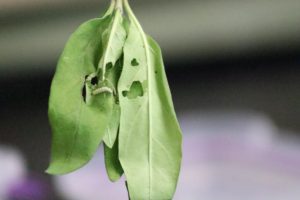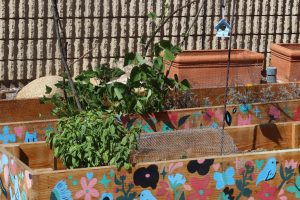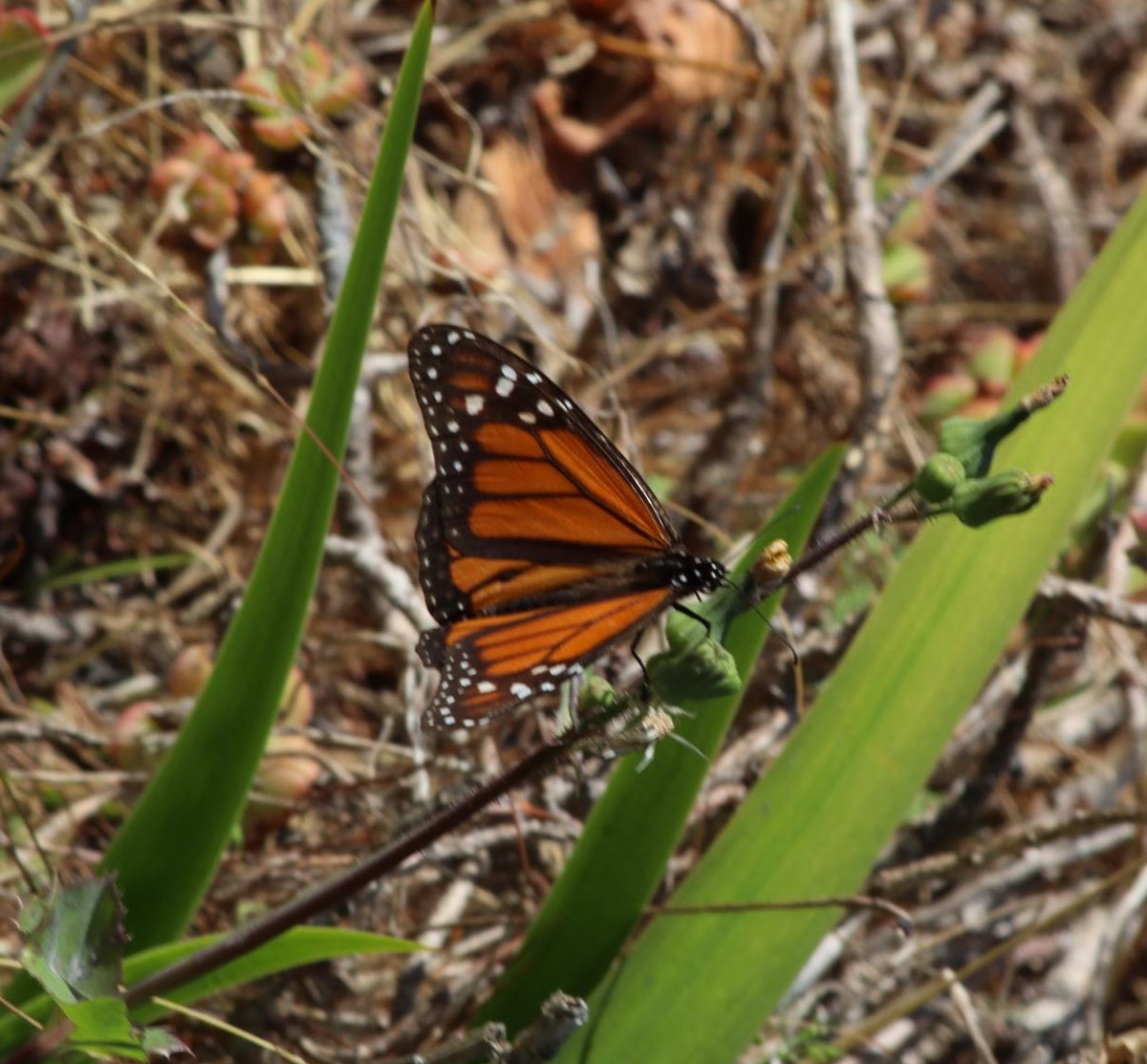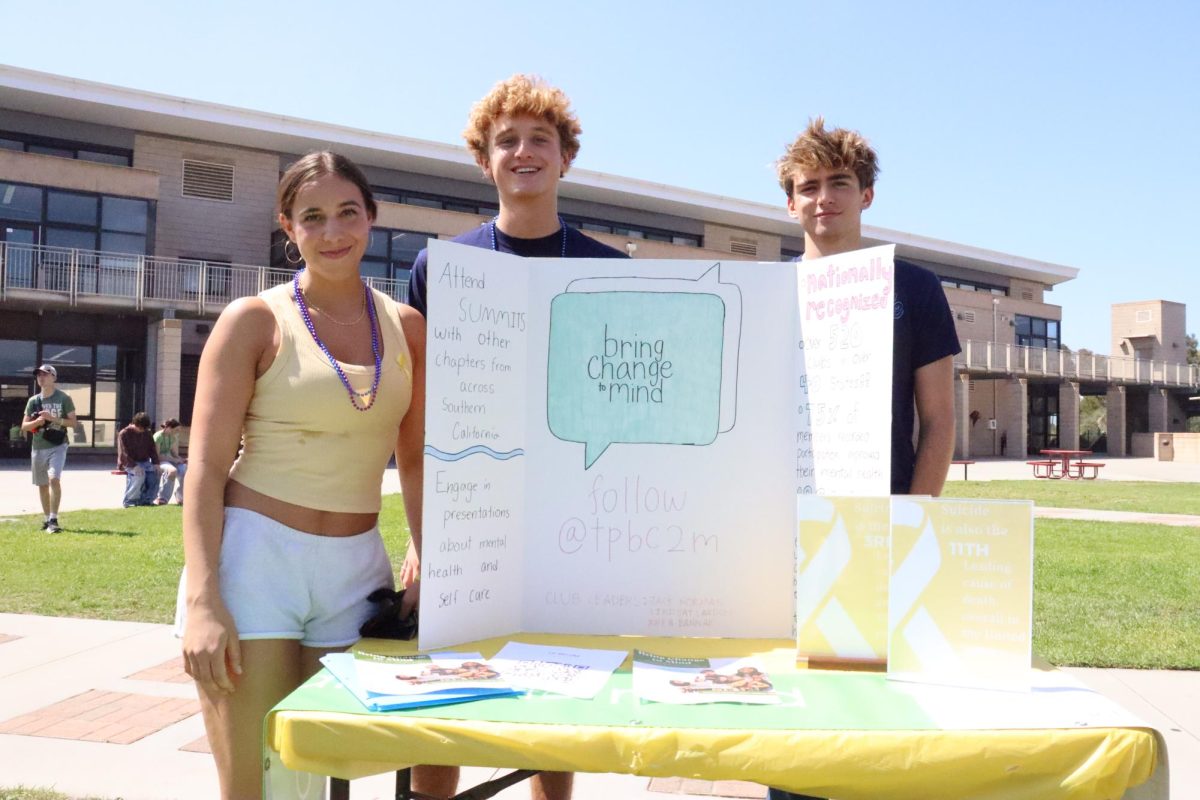A monarch butterfly just fluttered by. In hues of orange, shining gold in the sunlight, a monarch is a sun catcher. Do you see it?
In the autumnal months, monarch butterflies embark on their migration to warmer weather beginning in August, according to the U.S. Fish and Wildlife Services. The two populations, named for their location east or west of the Rocky Mountains, take different routes to their overwintering sites. The western population migrates down from Canada through California to Baja California, while the eastern population migrates from the Midwest to Mexico.
“It’s very critical for [the species] to be able to develop from caterpillars to butterflies [in California],” Charlotte Sach (12), one of the presidents of Urth Club, said.
Monarch butterflies require the California climate during this period because they are sensitive to changes in temperature. They rely on these environmental cues to reproduce, migrate and hibernate, according to the World Wildlife Fund.
The eastern population overwinters in the forests of Michoacan, Mexico, according to the U.S. Forest Service. Abril Marrero (12), who lived in Mexico until she was nine, saw the migration of the butterflies growing up.
“Monarch butterflies are really important in Mexico,” Marrero said. “Everyone really likes them…it’s supposed to be special when you see [a monarch butterfly] because they’re only [in Mexico] for a certain time.”

Look up! A kaleidoscope of butterflies rests in the trees above.
These overwintering sites are in danger, however. As a result of climate change, monarchs are no longer overwintering in the same locations in Mexico, according to an AP News article. Extreme heat and drought caused the monarchs to relocate to cooler overwintering sites in mountain tops nearby as opposed to the traditional ones this year, according to the article.
“Monarch butterflies are very fragile creatures and they are vulnerable to change in temperature,” Sach said.
Biology teacher and butterfly enthusiast Julianna Newell reminisced about what overwintering sites in California for the western population of monarchs used to be like.
“In Santa Barbara, when I was there in 1992, I did a full year research project on the monarch overwintering sites, and I sampled a bunch of sites and [now] none of them are there,” Newell said. “I would go and sit, and the butterflies would be dropping out of the sky, landing all over you. It was like being in a fantasy world. It was incredible. It’s not like that anymore. It’s really sad.”
President of Garden Club, Celestine Chinnappan (11), loves butterflies and wanted to see the migration in person from a young age.
“I remember watching on TV,” Chinnappan said. “They all gathered on one tree, laid their eggs and then they flew back to where they came from, which is cool because they just know where to go.”

A monarch butterfly just flitted past. A rare sighting these days.
These overwintering sites are becoming increasingly rare to see, particularly as the monarch butterfly population is decreasing. The eastern population alone decreased by 59% in 2024 and the species as a whole is classified as endangered, according to the World Wildlife Fund.
In part, this decline stems from agricultural practices.
“The big problem is pesticides, and that’s never gonna change, honestly,” Newell said. “The pesticides are killing the caterpillars…and the herbicides kill the milkweed.”
The implications of losing these important pollinators extend beyond losing a species; it impacts humans as well.
“No bugs, no food for us,” Newell said. “Our pollinators are super, super important and if we’re not paying attention to that… we’re killing the butterflies. It’s gonna end up on us. We’re not going to have the food that we need. There’s no good way to pollinate other than our insects.”
Not all hope is lost, though. Even on campus, the path to helping monarchs can begin with simply learning about them.
“Being educated is the first step to taking action,” Chinnappan said. “If you don’t know what’s going on around you, you can’t help.”
MaryAnn Rall, who teaches AP Biology and Biotech and is the adviser of the Garden Club, does her part in educating students as well.
“I usually bring in caterpillars to school and we have class pets for a couple weeks…then we let [the butterflies] go on campus,” Rall said.
The next step to helping the monarchs is taking action — and it is completely possible, even for people who do not know much about these butterflies.
“Plant host plants in your yard and plants that [butterflies] eat,” Newell said. “Planting in your yard, even if it’s in pots, and not spraying pesticides and herbicides in your yard [will help butterfly populations].”

Club leaders are also working to create change.
“My club and any other earth-related, plant–related clubs can encourage their members to take individual action to support the monarchs,” Sach said. “I think we could improve on campus with native plants, so I don’t think there’s as many [monarch butterflies] here because we don’t have many flowering, nectar-rich plants.”
Garden Club has a solution.
“We were planning on planting milkweed in our garden — that was one of the first things we were going to do, but we haven’t gotten it yet,” Chinnappan said. “Since it’s a new year, I’m planning on planting it.”
A monarch butterfly just landed in the school garden. Hovering above the purple blooms of the newly planted milkweed, the monarch rests its wings. Do you see it?
In the end, even these small efforts can make a difference.
“Hopefully, because [monarch butterflies are] endangered they’ll be getting more protection and more action in the community and countrywide,” Rall said. “By having that classification it’ll actually make more resources go toward saving them and maybe their numbers will increase. That’s my hope.”









